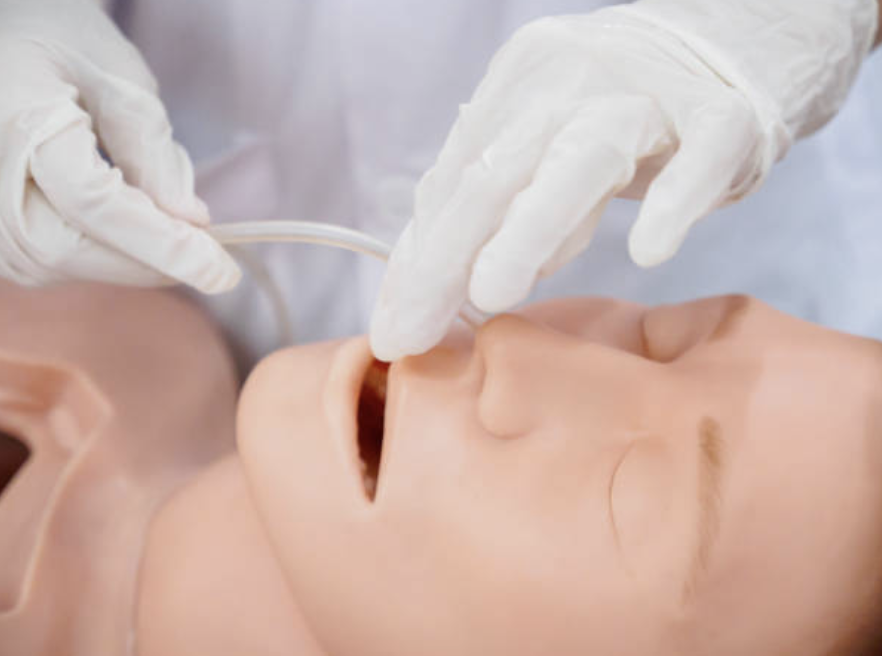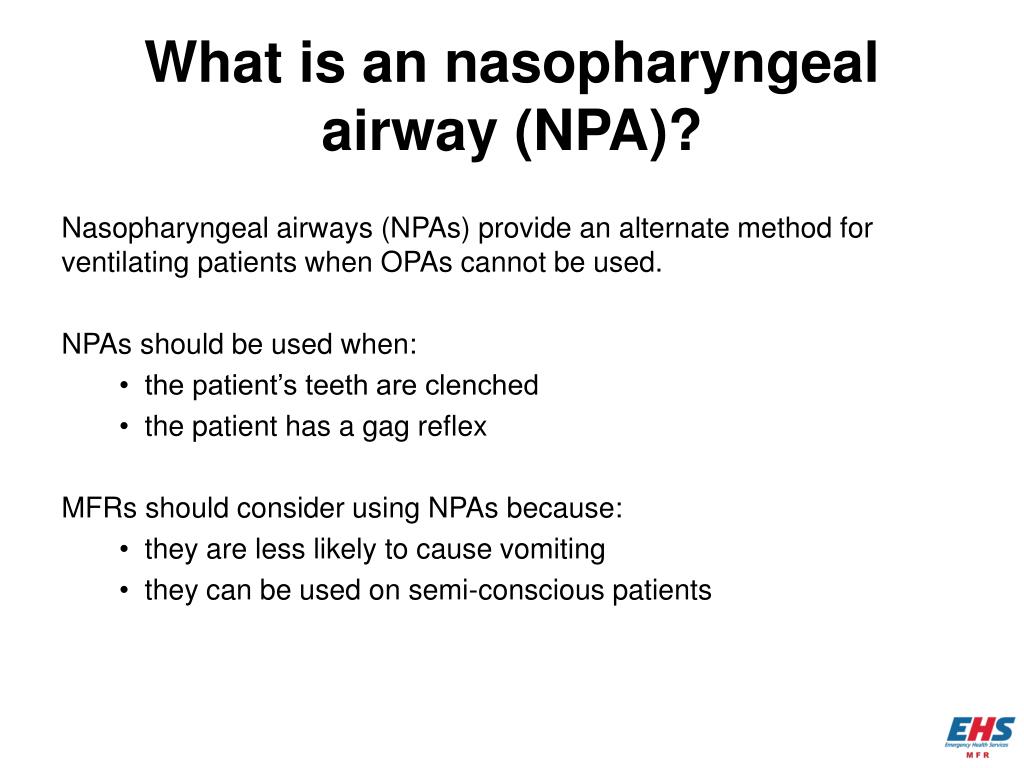The Most Serious Complication Associated With Using a Nasopharyngeal Airway
Selecting the right tube and ensuring that you can see the airway prior to intubation greatly reduces the risk of serious injuries. B damaging the turbinates.

4 Potential Nasopharyngeal Airway Complications
However an open wound increases the risk of developing an infection especially if the patient bleeds vomits or aspirates.

. The MOST serious complication associated with using a nasopharyngeal airway in a patient with trauma to the head or face is. A nasopharyngeal airway is inserted. In most cases the injuries are minor causing small bruises or wounds.
Minor trauma including pinching of the lips and tongue is commonUlceration and necrosis of oropharyngeal structures from pressure and long-term. Can maintain a patent airway in a semiconscious pt with a gag reflex. The most serious complication associated with using a nasopharyneal airway in a patient with trauma to the head or face is penetrating the cranium a nasopharyngeal airway is inserted.
The nasopharyngeal airway is MOST beneficial because it. Asked Nov 4 2021 in Health Professions by hmiddleton2300. C lung tissue injury and gastric distention.
Asked Nov 4 2021 in Health Professions by Paramedic. Have pulmonary edema and can follow verbal commands. Asked Nov 4 in Health Professions by Logic.
Likewise what is the most common complication after inserting an oral airway. The patient is a 12-year-old boy diagnosed with acute lymphoid leukemia ALL. The MOST serious complication associated with using a nasopharyngeal airway in a patient with trauma to the head or face is.
The MOST serious complication associated with using a nasopharyngeal airway in a patient with trauma to the head or face is. Can maintain a patent airway in a semiconscious patient with a gag reflex. C penetrating the cranium.
Click to see full answer. The Most serious complication associated with using a nasopharyngeal airway in a patient with trauma to the head or face is. Penetrating the cranium You have inserted an oral airway and are ventilating an apneic woman with a bag-mask device.
The MOST serious complication associated with using a nasopharyngeal airway in a patient with trauma to the head or face is. Asked Nov 4 2021 in Health Professions by Paramedic emergency-medical-services. Improper technique can cause the tube to enter the cribriform plate causing soft tissue or skull damage and.
Traumatic brain injury TBI or central facial fractures which generally result from blunt force trauma to the head or face can cause a structural collapse of the bones that separate the brain from the nasopharyngeal area. D causing severe bleeding. Sinusitis and Nasal Structure Damage.
D inadequate oxygenation and tracheal injury. The MOST serious complication associated with using a nasopharyngeal airway in a patient with trauma to the head or face is. It is widely taught that a suspected or known basal skull fracture is a contraindication to NPA placement.
Long-term use of a nasopharyngeal airway may cause ulcers particularly if you use a tube that is too rigid or too. Asked Nov 4 2021 in Health Professions by Paramedic emergency-medical-services. A fracturing the septum.
Asked Nov 4 2021 in Health Professions by Paramedic. Non-invasive airway supplementation includes passive. Cribriform insertion is perhaps the most catastrophic complication of a nasopharyngeal airway but it is also the least likely.
The nasopharyngeal airway is most beneficial because it. Long-term use of a nasopharyngeal airway may cause ulcers particularly if you use a tube that is too rigid or too large. The MOST serious complication associated with using a nasopharyngeal airway in a patient with trauma to the head or face is.
Placing an NPA in patients with these fractures could further damage the structural integrity of the bone and surrounding tissue or result in direct. B reduced tidal volume delivery and hypoxia. The most serious complication associated with using a nasopharyngeal airway in a pt with trauma to the head or face is.
What is the most serious potential complication of nasopharyngeal airway insertion into a patient with facial trauma. CPAP is indicated for patients who. All efforts should be taken to maintain a patients airway via non-invasive methodology unless indications for invasive airway management are apparent.
Two major complications can occur with the use of OPAs. The process of exchanging oxygen and carbon dioxide between the alveoli and the blood of the capillaries is called. Iatrogenic trauma and airway hyperreactivity.
The MOST serious complication associated with using a nasopharyngeal airway in a patient with trauma to the head or face is. The nasopharyngeal airway is MOST beneficial because it. The MOST serious complication associated with using a nasopharyngeal airway in a patient with trauma to the head or face is.
Complications associated with using a manually triggered ventilation device include a inadequate ventilation and hypercarbia. This is based upon two single case reports 12 13 Level V. Asked Nov 4 in Health Professions by Paramedic.
Airway trauma is the most common complication of a nasopharyngeal airway. The MOST serious complication associated with using a nasopharyngeal airway in a patient with trauma to the head or face is. The MOST serious complication associated with using a nasopharyngeal airway in a patient with trauma to the head or face is.
It is possible that the fear of complications associated with the NPA has limited its use. Can maintain a patent airway in a semiconscious patient with a gag reflex. A nasopharyngeal airway is inserted.
Basic airway management in both the pediatric and adult populations includes assessing and managing airway patency oxygen delivery and ventilation.

Ppt Airway Management Powerpoint Presentation Free Download Id 4456837

Choosing The Correct Size Of Nasopharyngeal Airway Image A From Download Scientific Diagram

Medictests Com Nasopharyngeal Airway Placement 1 Bsi Facebook
Comments
Post a Comment